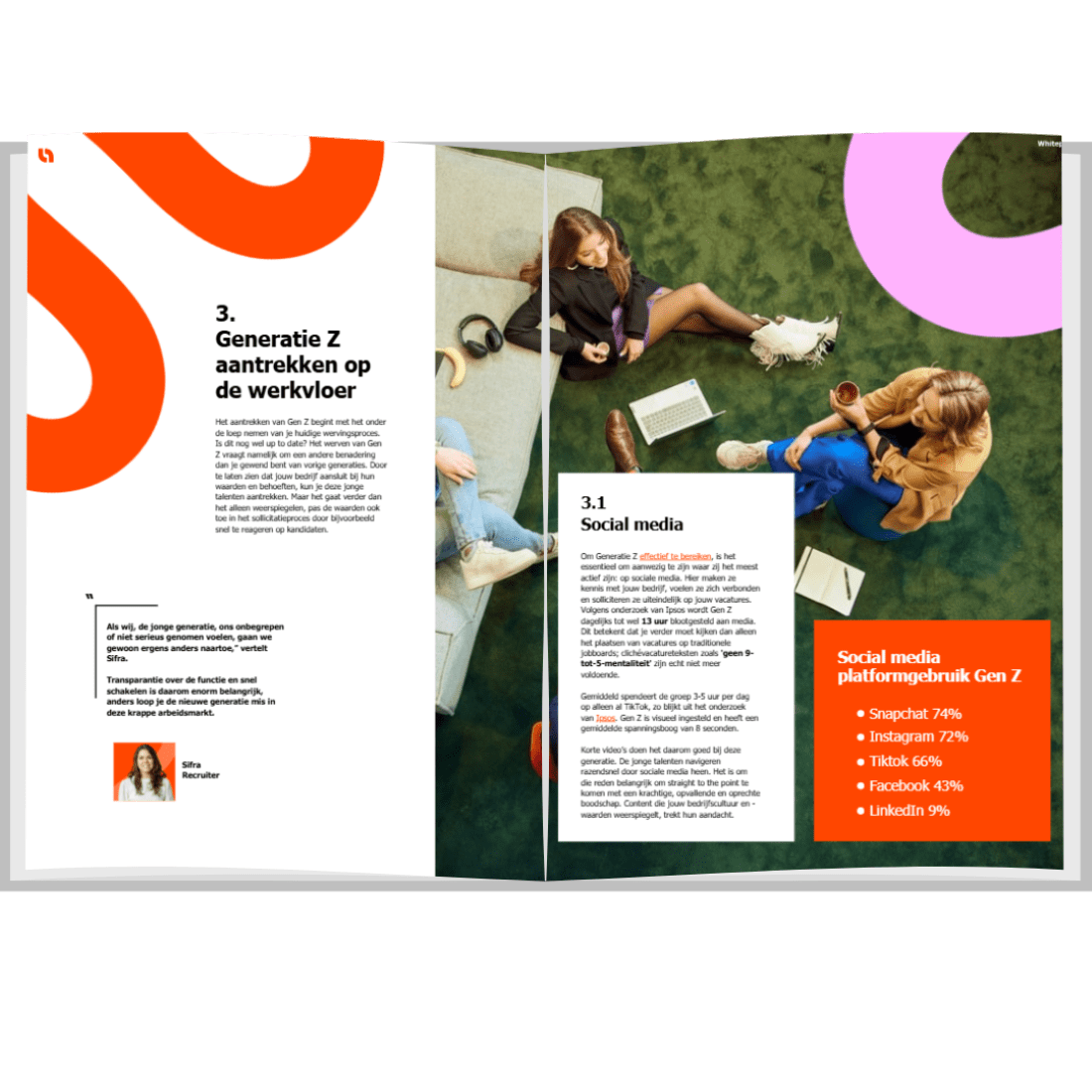How to write an inclusive job vacancy

Having a diverse and inclusive team starts with the right job vacancy. When you use too much jargon or masculine language, you risk missing out on your ideal candidate. This results in a team that lacks diversity in terms of gender, ethnicity, and specialisations. But what does a readable and inclusive job advertisement look like?
Diversity vs inclusivity
Having a diverse and inclusive team make organizations more innovative, successful and profitable. This is according to research from the Harvard Business Review. Diverse perspectives within a team lead to better decision-making and improved quality of products and services.
Job postings are the first step toward an inclusive team. Many companies in the financial sector strive to hire more female staff, but if the job description does not appeal to them, it becomes difficult to attract the right candidates. Research by Sia Partners shows that currently 67% of Dutch job postings use more masculine than feminine language, making it harder for a woman to find herself in the vacancy.
Furthermore, inclusiveness is different from diversity, despite the fact that they often go hand in hand. Your team may be diverse through a mix of age, gender, background and specializations, but that does not make it inclusive. In fact, inclusiveness is in the way you work. Because how do you deal with this diverse group of people? What is the social norm? Does everyone feel welcome, does everyone have the same rights and are there no formed groups setting the tone?
“Solid Professionals feels like home, just like our group of consultants.”
Diverse recruiting
An inclusive job posting ensures that everyone understands your text. That means you don't use too much masculine language, jargon or typical Dutch expressions. This way you appeal to everyone, including people who are less proficient in the Dutch language, for example because of dyslexia or because they have a different mother tongue.
Before you start drafting the job description, it is important to have a clear idea of what competencies are needed for the position, what tasks the candidate will perform and what kind of team he or she will be part of. This will help to clearly define the position and attract candidates who can identify with it. It also ensures little ambiguity in the text and incomprehensible requirements in the position.
Who is your target audience?
It is important to understand who your target audience is. Who are you writing the job posting for? For example, if you want to attract younger candidates, you need to understand what motivates and appeals to them. For example, Generation X has different needs than Generation Z. Do some research into what this generation finds attractive in an employer and see if you can capitalize on this.
Given the composition of the Dutch population, with about 50% being women and almost a quarter having a migration background, it is important to offer different arrangements. This can range from flexible working hours, working remote or swapping holidays to offering language courses, menstrual leave or childcare.
It is also important not to make too many demands in the job description, as this can deter potential candidates. Women in particular tend not to apply if they do not meet all the requirements, even if they are otherwise suitable for the position.
Word choice
Think carefully about the words you use in the text. Using outdated language turns off younger people. But on the other hand, using overly youthful language may not attract older candidates. Someone aged 50 might not be excited by words like: Friday drinks or ‘working in a dynamic young team’. Try to stay as neutral as possible in your word choice.
Consider the benefits of your company that you highlight in the text. Is it necessary to mention the Friday afternoon drinks? It may be part of your company culture, but it’s not attractive to everyone. You automatically exclude people who don’t drink alcohol due to religion or health reasons. Consider if you can offer something else that is also fun for people with different interests. Of course, this doesn’t mean you can’t have drinks at work, but don’t let it be one of your advantages.
Feminine - Masculine
Considerate - Active
Cooperative - Direct
Involved - Knowledgeable
Understanding - Commercial
Loyal - Assertive
Communicative - Analytical
Careful - Independent
Polite - Result-driven
Responsible - Stress-resistant
Supportive - Self-reliant
Open - Lead(ing)
Trusting - Decisive
Your company's benefits
It is good to think about the benefits of your company that you highlight in the text. Is naming the Friday afternoon drinks necessary? It may be part of your company culture, but it may not appeal to everyone. You automatically exclude people who do not drink alcohol because of religion or health. Consider whether you can possibly put something else in place for this, which is also fun for the people who have other interests. This obviously doesn't mean you can't have drinks at work, but don't let it be one of your perks.
Implementing inclusivity in the workplace
Does your organization already consist of a diverse team, but are you still searching for how to implement inclusivity in the workplace? Keep in mind that an inclusive work environment involves open and direct communication, listening to new ideas, paying attention to good leadership and allowing for personal growth. Are you already doing this? Name this. This is how you make your job posting truly inclusive and attractive.
So an inclusive and diverse job posting is more than just describing a position. Your target audience comes first and what you want comes second. Ultimately, it is the candidate who decides whether or not to respond to your job posting. To achieve that, your organization must be attractive and inclusive enough; if you are not, Gen Z in particular will tend to look elsewhere for another employer.



